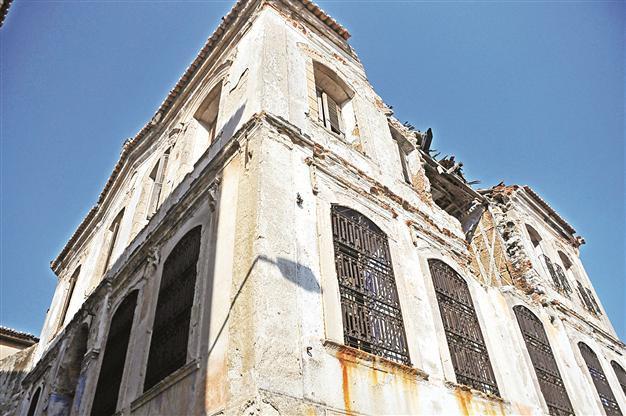Muğla’s millennia-old drawings to gain protection with a shield
MUĞLA - Anatolia News Agency

The shield for protection has been made with the characteristics of the architecture from the fourth century BC. Traditional buildings around the area will also be restored as part of the project to create an open-air museum.
Officials in the southwestern province of Muğla’s Milas district are working to protect priceless wall drawings dating back millennia by erecting a shield to keep out the elements.“The works are close to completion. The shield has been made with the characteristics of the architecture from the fourth century B.C.,” said Adnan Diker, an academic at Muğla Sıtkı Koçman University.
The shield will be especially designed to protect the drawings from rain and snow.
Cultural treasure
The drawings, which are located in a 2,400-year-old tomb and are the most important cultural treasure in the vicinity, have been added to the UNESCO Temporary World Heritage List and were recently visited by an Italian team for analysis.
Excavations on the tomb are continuing, Diker said. “We have also excavated many remains from the early Byzantium and Roman era.” Ultimately, the excavation area will be opened to tourists as an open-air museum called the Uzunyuva Tomb Archaeopark and Center.
“The excavation works are still continuing at the tomb room, which belonged to Carian King Hecatomnos during Persian control of the area. The project is supported by the Culture and Tourism Ministry’s Cultural Artifacts and Museums Directorate,” said the scholar.
The shield became necessary after workers knocked down some buildings in the vicinity while conducting a cleaning of the area, leaving the drawings open to the elements.
“In order to reveal the area and continue the excavation works, the environs had to be cleaned. That’s why the unnecessary buildings have been demolished,” Diker said, noting that the shield was made from wood.
The academic said the tomb itself was protected with a climate system that included a humidity and heating system, as well as temperature control. “The humidity may increase or decrease. If it decreases and this place starts to dry out, the walls would be damaged. Marble dust may stick to the walls, affecting the visibility of the drawings.”
Diker said a shield was also needed because it was impossible to clean such dust off the walls.
The shield is ultimately only expected to be temporary because there is a new project to build a museum in the area.
Traditional buildings around the area will also be restored as part of the project to create the open-air museum, he said, noting that many works of art would be exhibited in the area, including Milas carpets and Milas architecture. The buildings have already been restored, but the work has not yet been completed, according to officials.
















